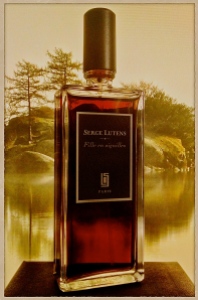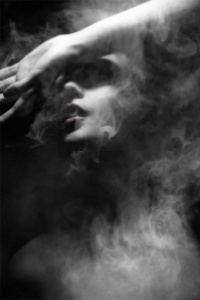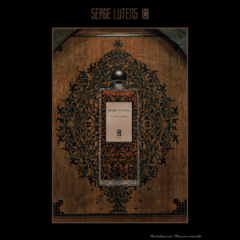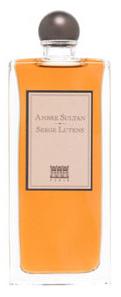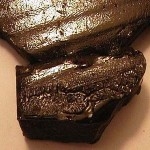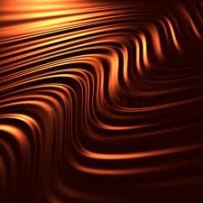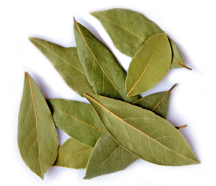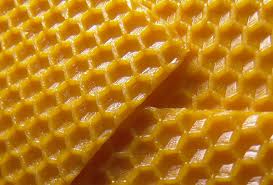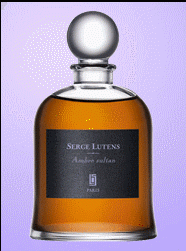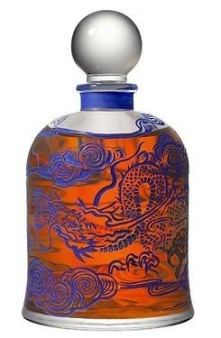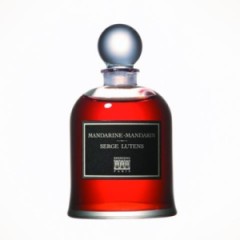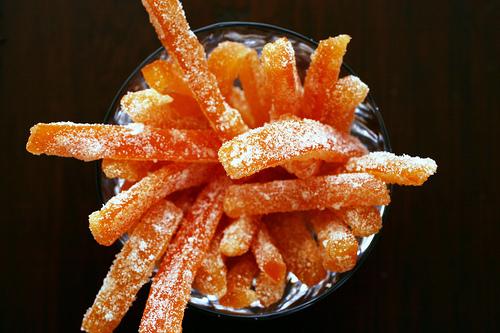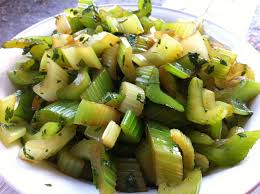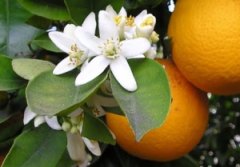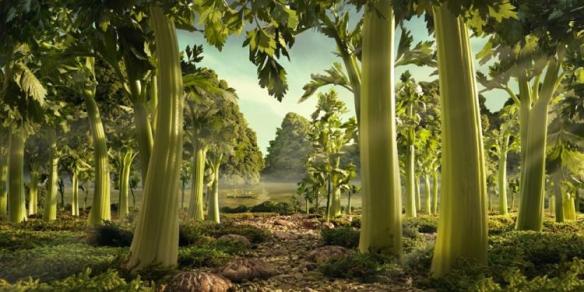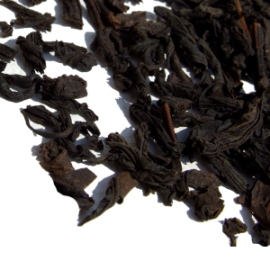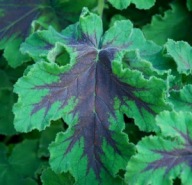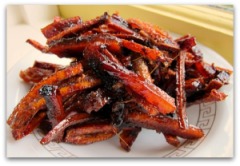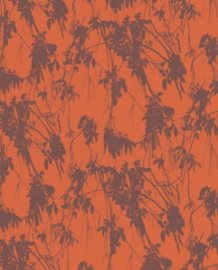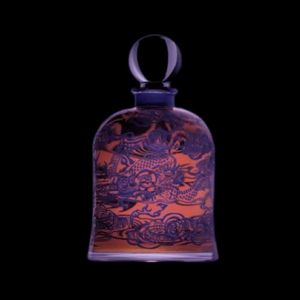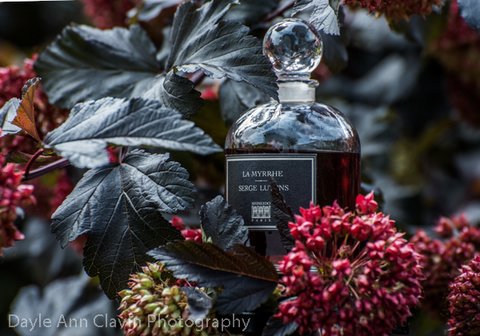
Photo used by permission: Dayle Ann Clavin. Dayle Ann Clavin Photography, award-winning photography and services at http://www.dayleannclavin.com/
Forgive this fragrance, because it knows not what it does!
That is the express warning and plea given by Serge Lutens at the start of his description of La Myrrhe — and you should listen to him. If there is one thing that is the signature of Serge Lutens fragrances is how dramatically they can change, twisting and turning, turning you almost upside down at times, as if you were on a 100 mile-per-hour carnival ride. La Myrrhe does this perhaps more than most. It sent me plummeting me down to the depths of the abyss with an avalanche of one of my most hated notes in perfumery, before lifting me back up to a state of fascinated admiration where I couldn’t stop sniffing my arm. I’m not quite sure what to make of the complex jumble of emotions triggered by La Myrrhe, but I do know a few things: Serge Lutens wasn’t kidding with that warning; La Myrrhe is a thorny beauty; she has more layers than an onion; and I’m quite awed.
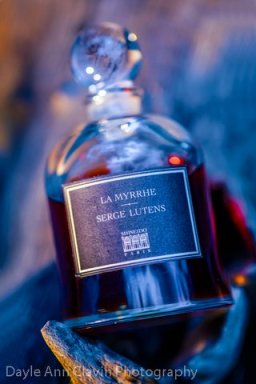
Photo used by permission: Dayle Ann Clavin Photography, photography by request. http://www.dayleannclavin.com/
La Myrrhe was created by Christopher Sheldrake, and released in 1995. The name translates to “The Myrrh,” which refers to the aromatic resin or sap that comes from a tree. Myrrh has a long, ancient history, not only going back to the Bible where it was supposedly brought as the most precious of gifts by the Three Magi for baby Jesus, but in other ancients religions and cultures as well. It is frequently burned as incense, and its aroma is sometimes nutty but, usually, it’s very soapy, cool and white. On occasion, it can be like licorice. Both of the latter aspects are on full display in Serge Lutens and Christopher Sheldrake’s famous eau de parfum, La Myrrhe. It is one of the famous bell jar “Paris Exclusives,” which means that it not sold world-wide but is generally exclusive to Serge Lutens’ Paris headquarters. That said, it can actually be purchased outside of France, either from Barney’s New York or directly from Serge Lutens’ international and U.S. websites, though it’s always at a big mark-up if you are buying outside of France.
Uncle Serge describes La Myrrhe as follows:
Forgive this fragrance, because it knows not what it does!
You know about myrrh and the Three Kings.
What you don’t know is that, here, myrrh takes on the fragrance of the night. I make it sparkle and fizz like champagne, sustained by a base note of mandarin orange.
Fragrantica classifies La Myrrhe as a “spicy oriental,” and says its mystery notes include:
mandarin, myrrh, lotus, bitter almond, sandalwood, honey, jasmine, amber, musk, various spices and pimento.
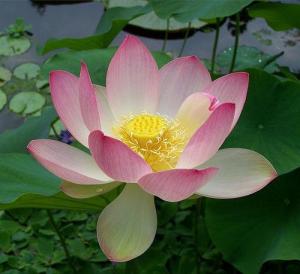
Lotus Flower via Wikipedia
La Myrrhe opens on my skin as…. well, as hair spray. The worst kind of hairspray, mixed with extremely expensive soap, and a horrible, unpleasant aroma of cheap acrylic or polyester. I once went to a used-clothing store to find 1960s polyester clothing for a costume party, and there is the exact same undertone to La Myrrhe’s head notes of intense hair spray. It’s all due to the aldehydes which explode on my skin as a tidal wave of cold, soapy bubbles. They’re mixed with the airiest of sheer, gauzy, orange notes and bitter almonds. A disconcerting note of chili pepper flickers in and out, like a red speck in a sea of sheer, frothy whiteness. An oddly aquatic element — presumably from the lotus flower — dances all around, adding a very pastel, liquidy, watery sweetness to the scent and strengthening the olfactory image of hair spray. The notes are all tied together in a bouquet by fresh, clean, white musk.
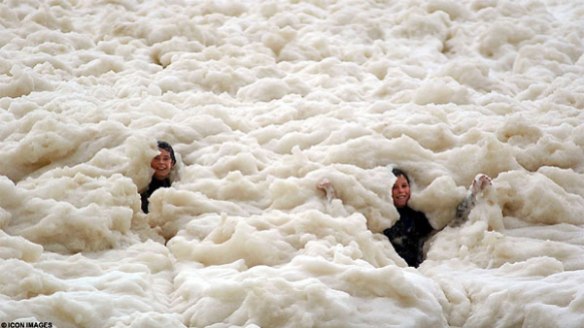
Source: megashara.com
La Myrrhe smells like the most expensive soap and shampoo around, mixed in with really cheap hairspray — and, yet, it also doesn’t. There is something more at play, despite the chemical, synthetic blur of whiteness underscored by an equally white, soapy touch of myrrh smoke. The most unusual touch for me is that lotus flower which feels almost as if it’s stepped into the wrong play with its aquatic, pastel, sweet undertones.

Source: Wikicommons.
The chilly, icy, frothiness of La Myrrhe is interesting, but the soapy, clean, fresh avalanche of aldehydes is too, too much for me. Aldehydes are my second most despised note of all time, going back to when I was seven and Hermès‘ Caleche almost put me off perfume for life. I cannot handle aldehydes in anything but the smallest amount; and holy mother of God, there a lot of them here! It’s giving me flashbacks to Chanel No. 5 which is well-known for its floral-aldehyde opening — and I cannot stand that legendary favorite, heresy though that may be. Neither the intriguing, beautiful, bitter almond note, nor La Myrrhe’s muted, subtle flickers of ambered sandalwood infused with jasmine in the base, can save this opening for me. In fact, the bitter almond combined with the frothing, white bubbles make me think of cyanide, since it has the smell of bitter almonds and can foam up like bubbles when ingested. To be precise, I keep thinking of the death capsules that Nazis like Goebbels and Goering used to escape justice. Yes, the degree of aldehydes in La Myrrhe makes me think of death in a very clear signal from my (not so) subconscious mind. Have I mentioned just how much I hate aldehyde bombs?

Jasmine via Wikicommons
Like a caterpillar larva stirring in a cocoon, La Myrrhe starts to move and shift quite quickly. Fifteen minutes into La Myrrhe’s development, the delicate, sweet jasmine stirs and starts to become more prominent. Unfortunately, so does the white musk which makes my head hurt a little. The aquatic, floral lotus flower recedes to the background, where it joins the orange note — both hidden under the landslide of white froth. Changes, however, are soon afoot, as the aldehydes begin to slowly, slowly, decrease to much saner levels. Amazingly, less than fifty minutes into La Myrrhe’s development, they’re almost a distant figure in what is now a very different landscape. Now, La Myrrhe is a jasmine, floral fragrance delicately veiled with only a light sprinkling of aldehydes which almost verge on the effervescent.
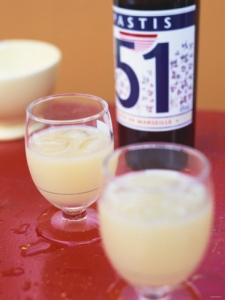
French Pastis. Source: Art.com
The myrrh has also changed. From a very soapy, white note that almost hinted at cold, churchy smoke, it now takes on a licorice facade. And it’s beautiful. It’s not salty like some black, licorice sweets, but rather cool and completely reminiscent of French Pastis, Greek Ouzo, or absinthe. Maybe it’s because I grew up partially in Europe, but I am extremely fond of the French and Greek national drinks, so I can’t stop sniffing my arm. The myrrh smells exactly like Pastis mixed with water, when it turns into an aromatic, still strongly anisidic, but almost sweet, drink. The milkiness of the note adds to the white visuals from the jasmine, the now quiet soap, the musk, the muted touch of white smoke from myrrh’s other side, and that interesting touch of bitter almonds.

Photo used by permission: Dayle Ann Clavin. Photographic services available at http://www.dayleannclavin.com/
It’s almost as if the visual cues are gently teasing those who saw La Myrrhe’s gorgeous, pale ruby colour and may have thought, “Ah, spicy!” No, it’s not. In fact, La Myrrhe is still a little “bathtastic” — to use the word so perfectly coined by The Scented Hound to describe Chanel‘s jasmine-aldehydic perfume, 1932. Unlike that scent, however, La Myrrhe has actual character. (And, it’s also not boring which is more than I can say for 1932….) Thankfully, baths and bubbles soon become a distant memory.
Shortly after the start of the second hour, La Myrrhe’s final stage begins, and it continues more or less unchanged until the very end. On my skin, La Myrrhe is primarily milky aniseed atop a delicately muted jasmine base that is sweetened by a smooth, almost custardy, but slightly dry, vanilla. It’s really a compulsively sniffable combination. The changes which occur are only one of degree. Around the 90-minute mark, La Myrrhe’s licorice element softens, feeling less like pure Pastis or Ouzo, and more like a floral twist on fennel fronds. I never smell the jasmine in a truly distinct, separate, strongly concrete manner. Instead, it merely transforms the licorice note into something fragrant. It’s as if the delicate, wispy fronds of a fennel bulb have flowered, if that makes any sense.
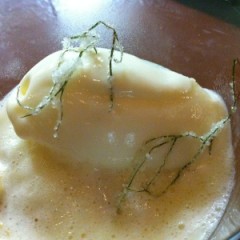
Vanilla with fennel. Source: foodspotting.com
Underneath, in the base, are the supporting players. There is still a touch of white smoke from the myrrh, now warmed over and sweetened, but it tends to be a somewhat ghostly note that pops up like a Jack in the Box, only to vanish for large stretches of time. A similarly temperamental, ghostly element is the honey which appears from time to time in the background, and which feels like a light drizzle of sweetness on the white accords. And then, there is the beautiful vanilla that makes up a big part of the base elements on my skin. It’s beautiful, feeling simultaneously rich and custardy, frothy and airy. It’s also very well-balanced, especially in conjunction with the myrrh which feels like a touch of green in the rich, delicately sweet, creamy base. Yet, despite the impact of the vanilla and occasional appearance of the honey, I would never call La Myrrhe a gourmand fragrance.
After twisting and turning every which way possible, La Myrrhe is now set in its final incarnation, remaining as a vanilla aniseed with the lightest of floral touches until the very end. It becomes softer and more abstract, until, in its dying moments, it’s nothing more than amorphous, light sweetness. All in all, La Myrrhe lasted exactly 9.5 hours on my skin the first time I tested it, and just under 8.25 hours the second time with a smaller dose. The sillage was always soft after that brutal opening but, even then, its projection was generally moderate. I think it’s definitely not an overpowering fragrance, and would be quite office-appropriate. That said, I have to caution that it may be a very different story if you spray La Myrrhe (as opposed to dabbing), let alone if you sprayed on a lot
La Myrrhe is such a complicated perfume that it seems to straddle many lines. It goes from soapy, clean bubbles and hairspray with aquatic pastel florals and cyanide-like bitter almonds, to taking on Chanel’s signature floral-aldehyde opening, to evoking Mediterranean Pastis/Ouzo, to a frothy, floral aniseed-vanilla confection that is far too dry to be anything like dessert. The opening is brutal, and not just in my aldehyde-hating opinion. Take, for example, The Non-Blonde whose review of La Myrrhe begins with three things she wishes she’d known before trying the fragrance:
Three things I wish I had known before trying La Myrrhe for the very first time:
1. It should not be sprayed. Never ever. Under no circumstances.
2. Aldehydes can be more than just floral or green. They can be spicy.
3. Husbands who don’t like aldehydes will not appreciate them even in a Serge Lutens perfume. Especially not in a moving vehicle.
Other than that? La Myrrhe is gorgeous and even the husband doesn’t complain after the first 30 minutes or so, when the root-beer and spiced honey soda take over and do their thing on my skin.
The first thing I smell if I spritz La Myrrhe is a harsh chemical you could mistake for cheap vintage hairspray (best case) or a pesticide. It really surprised me, since my first couple of La Myrrhe samples were little dab-on vials, so I never experienced this aspect until I got a larger decant. Even when it becomes more perfume-like, this 1995 Serge Lutens perfume is so carbonated and aldehydic it takes up all the air in the room. Luca Turin [sic, Tania Sanchez] compares it favorably to White Linen in his five star review of La Myrrhe. I only argue with the fact Dr. Turin sees the similarity as a positive thing. I used to wear White Linen a lot in the very early 1990s, but today I find it stomach-turning.
Yet, like me, The Non-Blonde had a very different — and entirely more lovely — experience by the end:
La Myrrhe dries down into a soft but determined oriental perfume, laced with honey and amaretto. There’s a little incense there that smells as though it was kept in a wooden box together with precious and rare spices. It has magic and mystery, a little danger of the unknown and a whole lot more sex-appeal than one would expect if they started their relationship with La Myrrhe by spraying it.
Not everyone can move past that beginning, however, no matter how lovely the end or its “sex-appeal.” On Fragrantica, one poor chap — who seems to share my mental association of aldehydes with death — wrote: “The aldehydes are a near-death experience.” Though he found La Myrrhe to improve once “the horror wears off,” he said bluntly, “I just don’t know if I can take the cave train downtown to get there without going blind from the chemicals over and over again. I just don’t know if I’m ready.” And I think that will be true for many people. La Myrrhe is a love it or hate it perfume, and it takes the Lutens level of complicated assertiveness to a whole new level. And, yet, it is also incredibly elegant.
As noted earlier, La Myrrhe bears a close resemblance to Chanel‘s legendary No. 5 in its opening moments. It’s not just me, either. On Fragrantica, a number of people bring up Chanel No. 5 — at least those who are not talking about bubble baths, “Mr. Bubble Bubble Bath,” “the smell of a public restroom with a very powerful pink air freshener,” or “dishwashing detergent bubbles.” (Can you tell how much those aldehydes dominate the opening?!) I think the similarities are very short-lived, however. Chanel No. 5 doesn’t have undercurrents of Ouzo, bitter almonds, and myrrh’s cold, soapy smoke. In addition, the true, vintage Chanel No. 5 is known as much for the sandalwood and civet tones in its base as it is for that opening blast of frothy aldehydes. Finally, as Bois de Jasmin explains so well, La Myrrhe takes the classic aldehydic tradition and up-ends it in a wholly modern manner.
In her five-star review, Bois de Jasmin writes:
The classicism of La Myrrhe (1995) is of misleading nature as it orchestrates its accords in a modern manner. The opalescent white veil of aldehydes that unfolds in the top accord almost hints at the floral waterfalls that are about to cascade softening the chilly breeze. Yet, instead of bergamot, rose, jasmine and ylang ylang of classical aldehydic compositions, La Myrrhe’s icy aldehydes become overlaid with sweet citrus, before falling into the heart spiced with anise. ….
Like other Lutens compositions, where the main note is highlighted and exaggerated (Tubéreuse Criminelle, Cèdre, Bornéo 1834), La Myrrhe brilliantly frames the myrrh by accenting its medicinal licorice tonality with anise notes and its sweetness with honey. […][¶]
Although haunting, La Myrrhe may not be the easiest fragrance to wear as the aldehydic burst paired with the medicinal facets of myrrh left unadorned lacks an expected warm counterpoint. Yet, this very dissonance is what keeps one’s interest while the composition slowly unfolds. Like would be expected of the majority of Serge Lutens’s compositions, its aloof elegance would suit both men and women. It is not a fragrance that has a particular seasonal designation, yet its spicy coldness is associated for me with the first snow and winter chill.
On me, La Myrrhe was never medicinal, and I barely had any citrus orange notes at all, but I agree with much of her assessment. It is a very aloof, chilly, white fragrance at the start, though I think it softens and warms later on. And she is absolutely correct in finding a dissonance when comparing La Myrrhe’s opening to its end. As I’ve said many times before, one of the things I love the most about Serge Lutens fragrances is their complicated nature and how they almost feel like a living thing. Here, the nature of La Myrrhe’s stages — the way they slowly slip and evolve from one thing to the next, and, more importantly, the incredibly sharp contrast between the first and final stages — really evoke the metamorphosis of a caterpillar into a gorgeous butterfly.
I think your reaction to La Myrrhe, and whether you can handle the opening, will depend largely on your feelings about “bathtastic” aldehyde bombs. If you enjoy something like Estée Lauder‘s White Linen, then you’ll probably share the admiration and love expressed by the perfume critic, Tania Sanchez. Her five-star review of La Myrrhe in Perfumes: The A-Z Guide reads, in part:
… Open the bottle and fall prey to total surprise. […] Lutens and Sheldrake set the smoky balsamic resin known as myrrh against a radiant, rosy, modern aldehydic floral of incomparable crispness, akin to White Linen. By this unexpected route, the fragrance somehow manages to replicate the thrilling balance of incredible brightness and sweetness that Shalimar once had, before decades of adjustments deepened its voice. La Myrrhe has a pure, clear, unearthly tone with beauty and force, as if the fragrance could sing a clean high C as high as heaven and not show the strain.
Like the Non-Blonde, I don’t think White Linen is anything remotely appealing, let alone an encouraging comparison. In fact, I suspect that Tania Sanchez loves the aldehydic part of La Myrrhe more than the rest of it, while I, in contrast, think it’s something to simply barrel through until you get to the good parts.
That said, I think La Myrrhe could definitely grow on you, and you could get used to that hellacious beginning. In my second test, when I dabbed on much less, I still thought about cyanide pills, death, and hairspray, but I wasn’t quite so ready to stick a fork into my jugular. In fact, if I weren’t engaged in this mad Lutens marathon right now, I’d probably put on more of La Myrrhe, and try it again. I actually love the Pastis and the aniseed-vanilla stages enough to where I’d be willing to just close my eyes and “think of England,” as the old saying goes, until that soapy avalanche does its business and gets out of the way. That says a lot coming from a person who doesn’t own a single fragrance with aldehydes.
So, is La Myrrhe a wearable, versatile fragrance, or just a work of art? For those who adore aldehydes with a passion, probably the former. The soft, warm, deliciously sweet beauty of the final stages makes it much more approachable and easy than its opening would lead one to suspect. For everyone else, however, I don’t know. It would really depend. But I think everyone would agree that La Myrrhe is a work of brilliance. Unfortunately, brilliant art is not always wearable.
DETAILS:
Cost & Availability: La Myrrhe is an eau de parfum that is part of the Serge Lutens “Paris Exclusives” line, which means it is available only in the larger 2.5 oz/75 ml Bell Jar size. It retails for $300 or €140 for a 75 ml/2.5 oz bottle. You can buy La Myrrhe directly from the U.S. Serge Lutens website or from the International one.
In the U.S.: you can also find La Myrrhe sold exclusively at Barney’s New York store. The website has a notice stating: “This product is only available for purchase at the Madison Avenue Store located at 660 Madison Avenue. The phone number for the Serge Lutens Boutique is (212) 833-2425.”
Personal Shopper Options: Undina of Undina’s Looking Glass reminded me of Shop France Inc run by Suzan, a very reputable, extremely professional, personal shopper who has been used by a number of perfumistas. She will go to France, and buy you perfumes (and other luxury items like Hermès scarves, etc.) that are otherwise hard to find at a reasonable price. Shop France Inc. normally charges a 10% commission on top of the item’s price with 50% being required as a down payment. However, and this is significant, in the case of Lutens Bell Jars, the price is $225 instead. The amount reflects customs taxes that she pays each time, as well as a tiny, extra markup. It’s still cheaper than the $290 (not including tax) for the bell jar via Barney’s or the US Serge Lutens website. Another caveat, however, is that Suzan is limited to only 10 bell jars per trip, via an arrangement with the Lutens house. There is a wait-list for the bell jars, but she goes every 6-8 weeks, so it’s not a ridiculously huge wait, I don’t think. If you have specific questions about the purchase of Lutens bell jars, or anything else, you can contact her at shopfranceinc@yahoo.com. As a side note, I have no affiliation with her, and receive nothing as a result of mentioning her.
Outside the US: In Europe, the price of La Myrrhe is considerably cheaper at €140 from the French Lutens website, the International one, or from their Paris boutique. Other language options are available, though the Euro price for the item won’t change. To the best of my knowledge, the Paris Exclusives are not carried by any department store anywhere, and the only place to get them outside of Barney’s New York boutique is the Paris Serge Lutens store at Les Palais Royal.
Samples: You can order samples of La Myrrhe from Surrender to Chance starting at $3.99 for a 1/2 ml vial. I actually ordered mine as part of a Five Piece Non-Export Sampler Set, where you can choose 5 Lutens Paris Exclusives for a starting price of $18.99 for a 1/2 ml vial.


